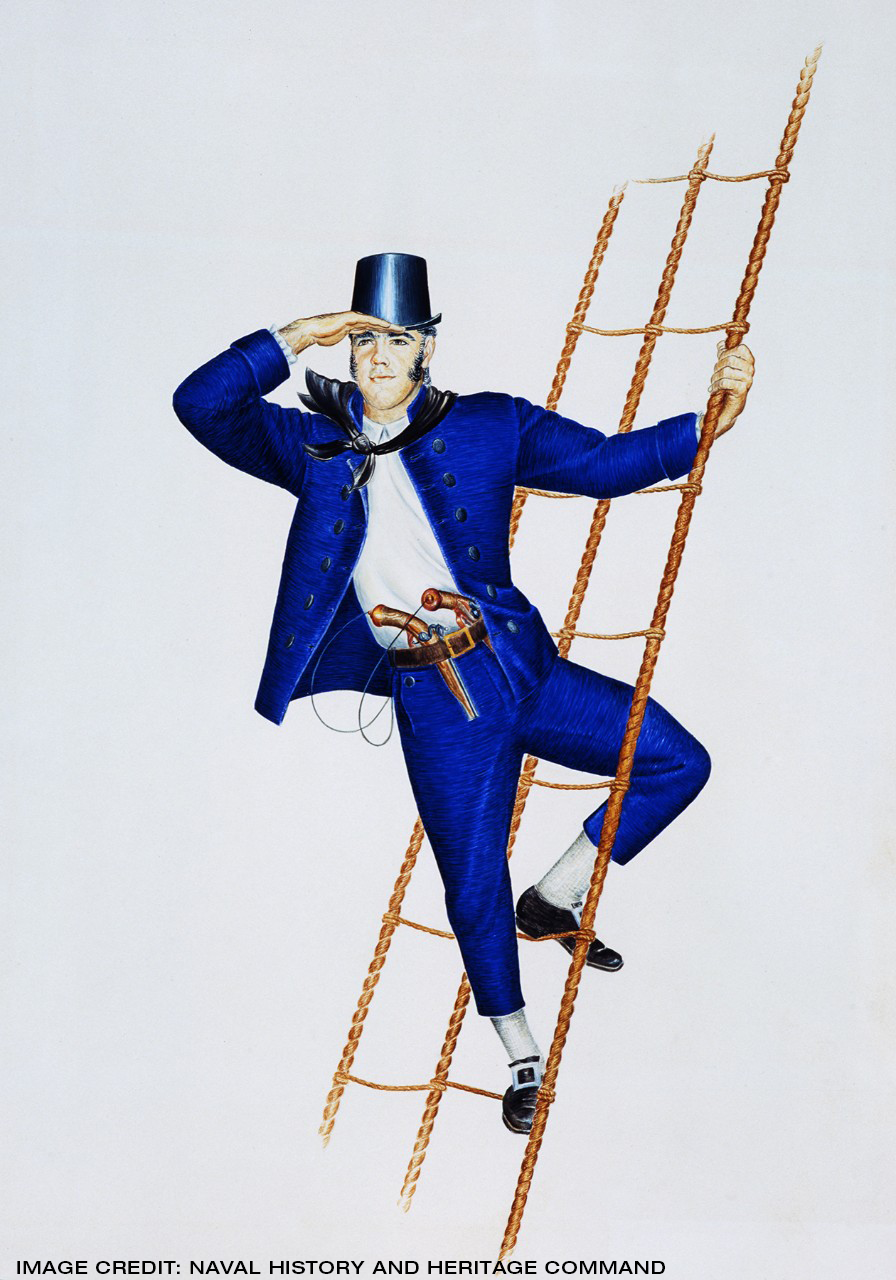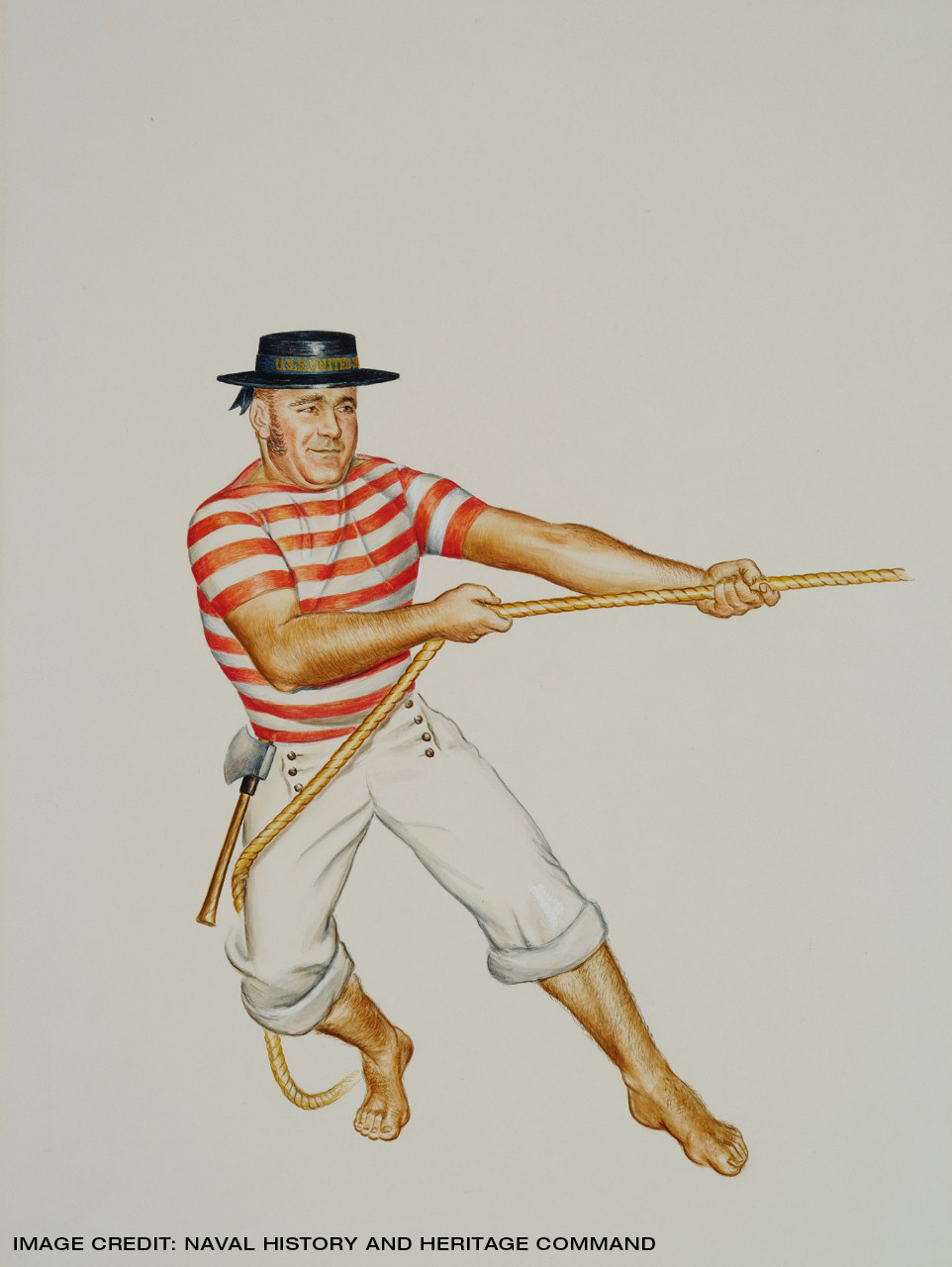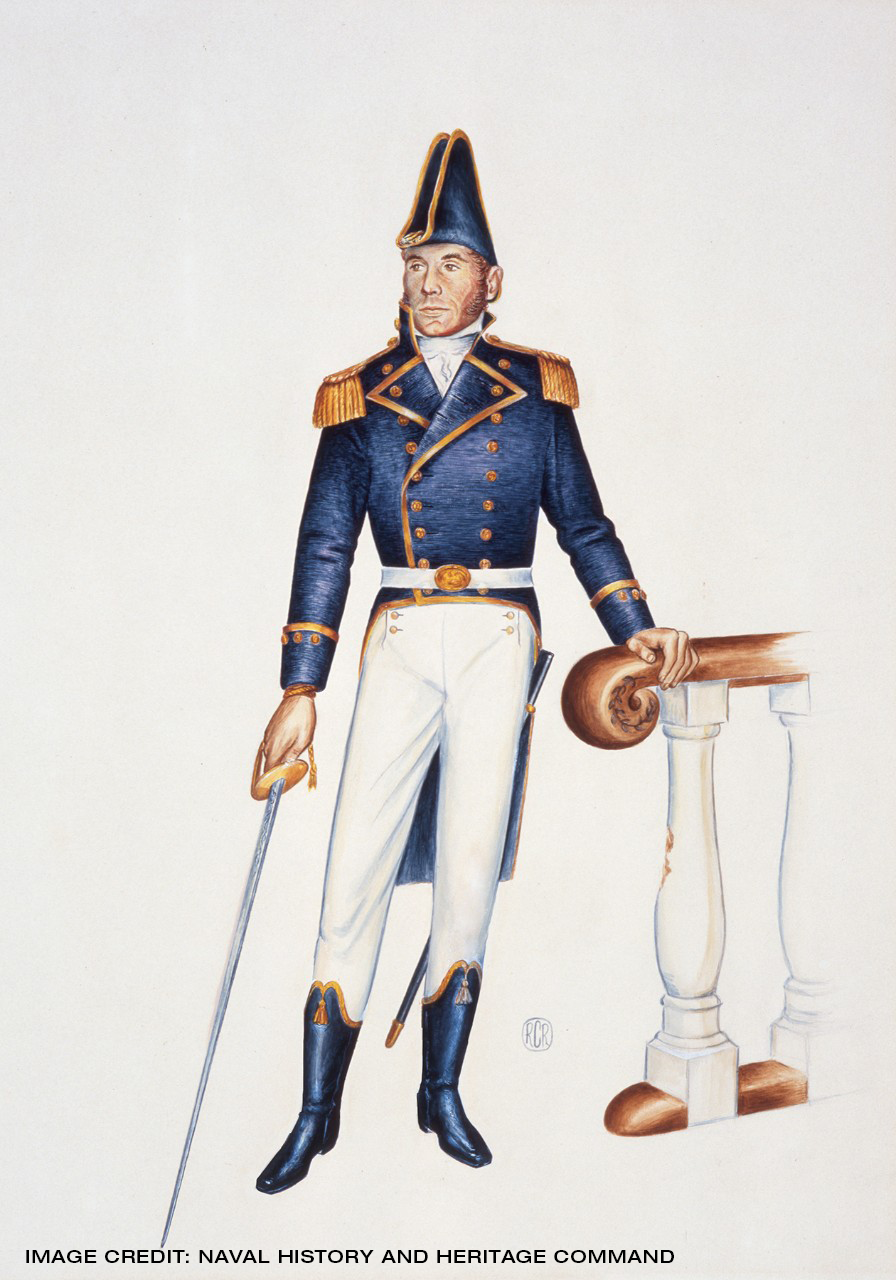Soldier Dress & Uniform in the War of 1812
Apart from militia uniforms, there was no standard outfit for army regiments at the beginning of the War of 1812. With regulation changes in 1813, uniforms were able to be mass produced and distributed quickly to troops.
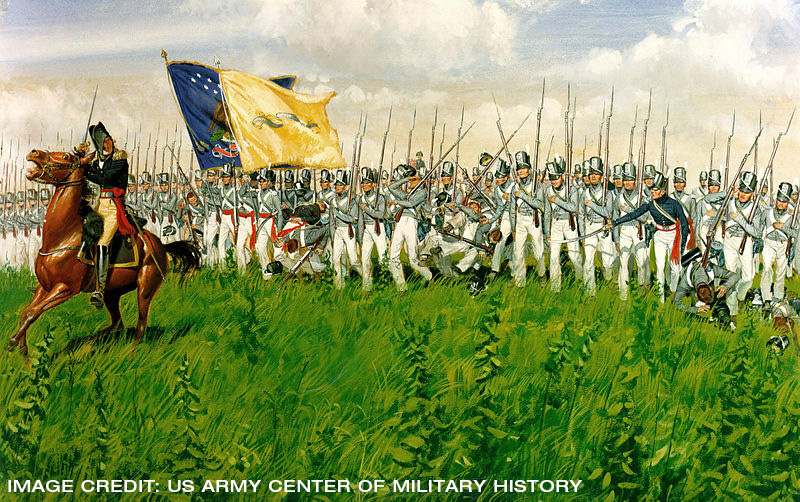
General Soldier Uniform
Soldiers were outfitted with a “tombstone” shako cap which was a tall, black, flat-top hat extending slightly at the top. These were originally made of felt but were later made out of leather for better weather resistance. The cap plate displayed the unit insignia along with a white wool plume. It also included a braided cord with tassels – artillery soldiers had yellow tassels and infantry soldiers had white.
Soldiers wore a single-breasted “coatee” which had 10 metal button closures and a high standing collar trimmed with white lace. The regulation color was dark blue, but due to dye shortages, gray, brown, and green wools were used as well.
Underneath the coatee would be a waistcoat, or vest, with a standing collar that went over the shirt. A summer waistcoat was made of linen and the winter version was made of wool. Shirts were made of linen and were longer and loose fitting with long sleeves and a large collar. Shirts would also double as a sleeping garment.
Trousers had replaced breeches and overalls by the outbreak of the War of 1812. Similar to the waistcoat, trousers were white linen for the summer, and a gray blue or white wool for the winter.
Soldiers were also equipped with gaiters made of black wool or canvas to protect the legs in rough terrain and to stop dirt from entering their shoes. They were worn over trouser legs and stopped just below the knee with a strap to attach under the boot.
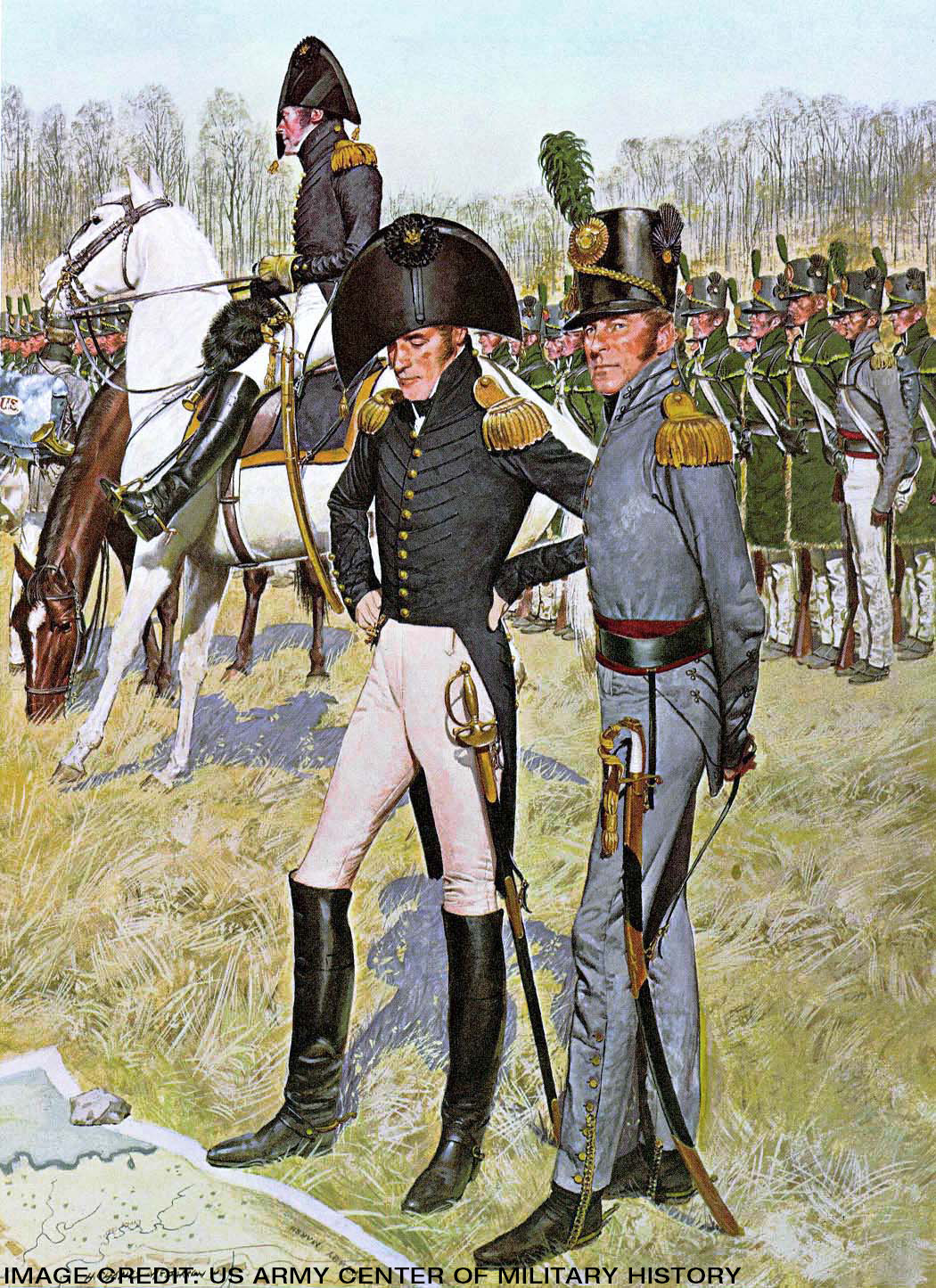
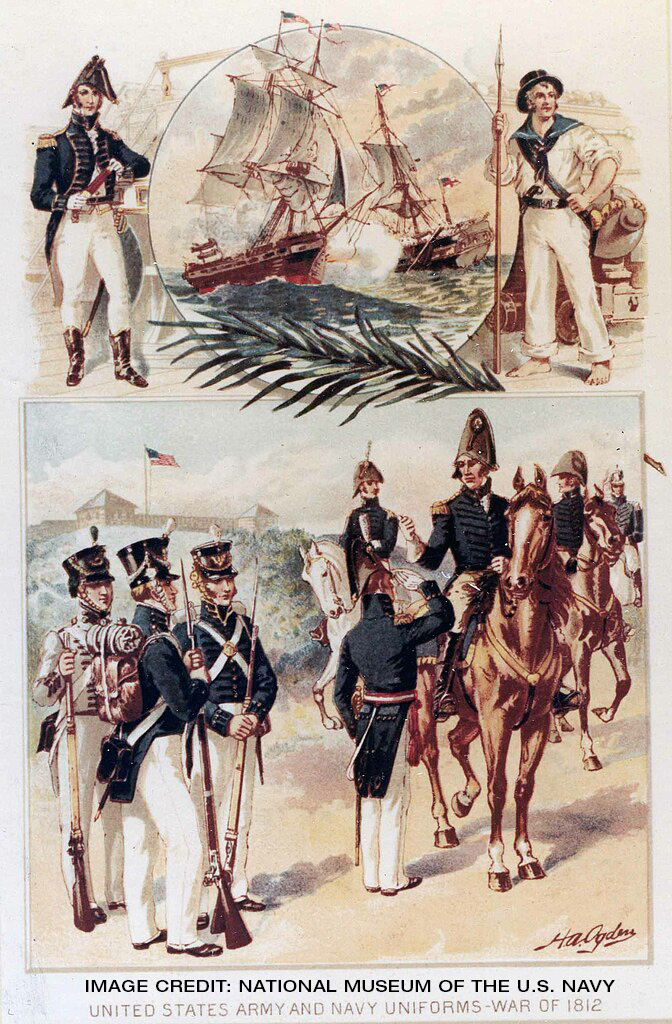
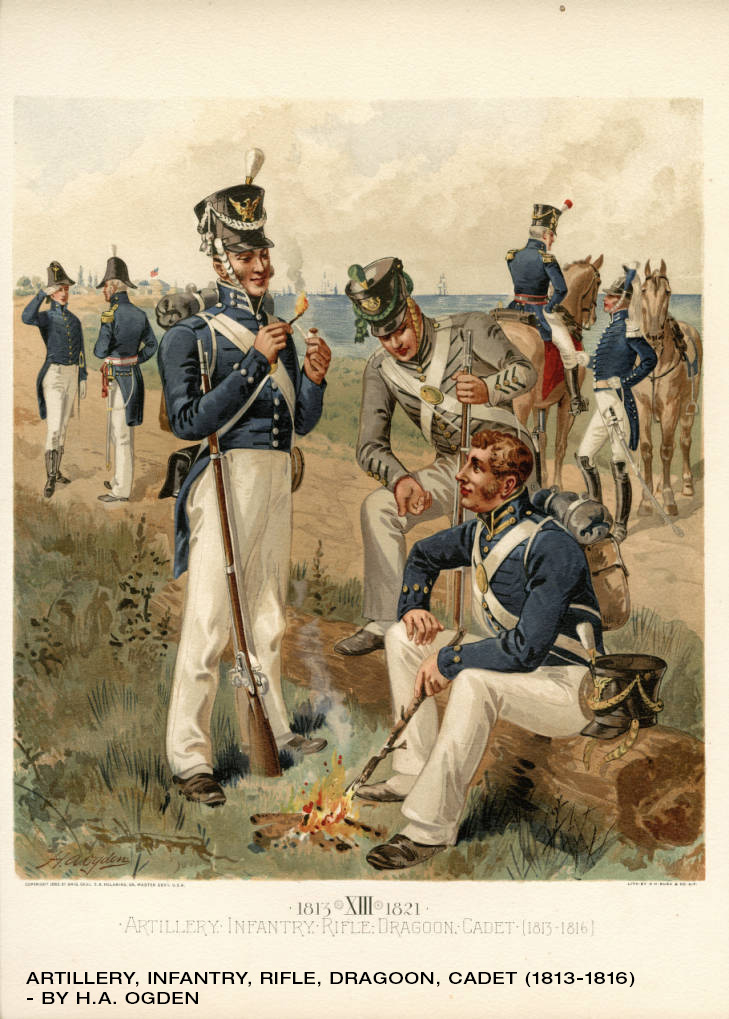
General Navy Uniform
In 1802, the Navy uniform regulations were adjusted to include a decoration of gold “lace,” gilt buttons, and a blue and white color scheme. While the uniform changed throughout the years, this was the style that was worn by naval officers at the outbreak of the War of 1812.
In 1813, Secretary of the Navy William Jones updated the uniform description for the senior officers with a “coat of blue cloth; with broad lapels and lining of the same; a standing collar…” This was similar to the 1802 uniform change, with the exception of shorter lapels and the direction of officers to wear pantaloons instead of breeches. During this transition period, officers found themselves dressed in some combination of the new and old uniforms.
For American seamen, there were no written regulations during this time regarding a standard uniform. However, they have been depicted in paintings and drawings of the time to wear blue jackets, scarlet waistcoats, blue trousers, neckerchiefs, and glazed hats which indicates there was a high degree of uniformity among enlisted sailors.
